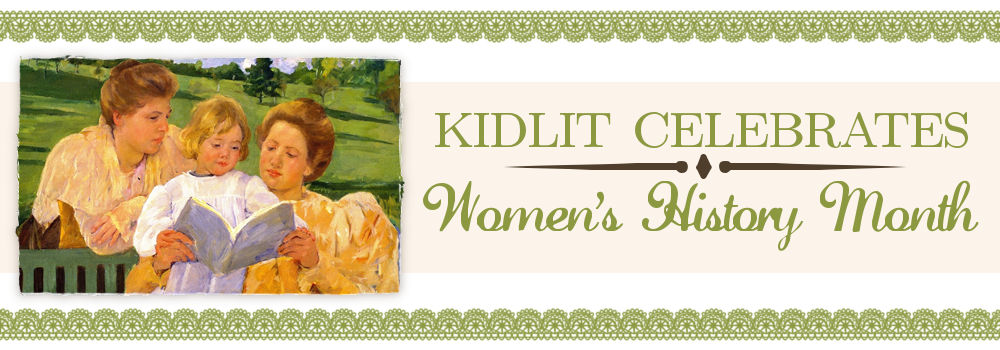March 23 - Today's post provided by Debbie Reese
Deselect that Squaw!
How’s that for a provocative title? What I mean is that I
want to see some solidarity amongst women, with the actions of that solidarity ones in which librarians deselect a
children’s book that uses “squaw” as the word for woman.
Let me elaborate.
I’m a Pueblo Indian woman born into a specific Pueblo Indian
tribe: Nambe. Our language is Tewa. If
I wrote a young adult novel that included our word for woman, I’d use kwee. If I were writing a novel about
one of the north Eastern tribal nations that speak Algonkian, I’d use squa or skwa or skwe. Those
words, Abenaki scholar Marge
Bruchac writes, mean “the totality of being female.”
“Oh!” you may be thinking, “then why do you want us to
deselect novels with ‘squaw’ in them?”
Let’s think about the word and how it is used.
Do you remember the scene in Disney’s Peter Pan where Peter, Wendy, and the Lost Boys sing What Makes the Red Man Red?
Stereotypes abound in attire, actions, and speech! The scene opens with Tiger
Lily, her dad, and Peter sitting cross-legged. Of course, they wear
headdresses. Tiger Lily’s dad says “Teach-em paleface brother all about red
man.” John exclaims that this will be “most enlightening.” One of the boys asks,
“What makes the red man red?” Another asks, “When did he first say ugh” and
another asks, “Why does he ask you ‘how.’
In spite of John’s expectation, this is not an enlightening
moment for anyone. It captures and affirms several stereotypes of American
Indians that, unfortunately, pass as “knowledge.”
In answer to the questions, the Indians sing “What makes the
red man red,” beating drums with bare hands (that’s an error, too!), uttering
war-whoops (stereotype!) as they dance frenetically (stereotype!).
Wendy jumps up to dance, too, but a large Indian woman stops
her, saying “Squaw no dance. Squaw get-um fire wood.” Therein lies the problem
with the word. It has taken on an undesirable and derogatory connotation as a
drudge. Children don’t tune in to the sexualization of Tiger Lily in that clip,
but the rape and exploitation of Native women is something we contend with today.
Native people fought for the reauthorization of the Violence Against Women Act,
and celebrated
its passage earlier this month.
Barrie’s original story about Peter Pan, published in 1900,
used “squaw” as a derogatory word. James Fenimore Cooper used it, too, in Last of the Mohicans, first published in
1826. The devaluing of Native women, however, goes all the way back to John
Smith, who characterized Native men as idle savages whose women did all the
hard work. These Eurocentric characterizations were erroneous, but gained
traction for Europeans who used them to justify colonization.
In fact, Indigenous women had—and have—a great deal of
power. Check out The Hidden Half: Studies
of Plains Indian Women (1983) by Patricia Albers and Beatrice Medicine and The Sacred Hoop: Recovering the Feminine in
American Indian Traditions (1986) by Paula Gunn Allen.
That power, however, is hidden when we ask children to read
books like Elizabeth George Speare’s 1983 Newbery winner Sign of the Beaver. In it, Attean—a Native boy—views Native women
as squaws whose work is beneath him. Matt—the European boy—thinks Attean is
wrong to view women in that way. Speare’s book reflects that desire to justify
colonization of Indigenous lands and peoples, and that’s why I ask librarians
to deselect that squaw. It misrepresents Native women.
Let’s get rid of misleading books like Sign of the Beaver. You can deselect it using the CREW
method of weeding your library. There
are better choices available that accurately portray Native women and girls and
our languages in past and present contexts. Here are a few suggestions.
Dine (Navajo) artist Beverly Blacksheep has a beautiful
series of bilingual board books. From Baby’s
First Laugh through Baby Learns about
Weather, we learn about Navajo culture as the little girl at the heart of
the series learns words, numbers, colors and so on. The text is in English and
Navajo. You can get these board books from Salina Bookshelf.
Two outstanding picture books are Cheryl Savageau’s Muskrat Will Be Swimming, and Cynthia
Leitich Smith’s Jingle Dancer. Both are written by Native women, and
both feature a young Native girl. Savageau’s protagonist, Jeannie, is being
teased at school. Her flagging self esteem is galvanized by listening to her
grandfather tell her about Skywoman. In Smith’s Jingle Dancer, the protagonist, Jenna, is going to do the jingle
dance for the first time at an upcoming pow wow. Her grandmother, an aunt, and
a neighbor woman all play a key role in getting her ready.
Moving up to chapter books, check out Louise Erdrich’s award-winning series of historical fiction. You’ll
love the women in it, too. With seven-year Omakayas kicking it off in Birchbark House (the first of four
books), you’ll read about a family and tribal nation as they live their daily
lives, all the while contending with people who want their lands. Erdrich is a
gifted writer who handles those tensions beautifully and honestly, without
demonizing anyone. Birchbark House was the first one, followed by Game of Silence, Porcupine Year, and Chickadee.
For middle school readers, I highly recommend another book
by Cynthia Leitich Smith. Her Rain Is Not
My Indian Name has a Native protagonist dealing with first love, and loss,
too. Through it all, her Native heritage shines through.
To round off my recommendations, pick up Louise Erdrich’s The Round House for high school
students. Though not marketed to a youth audience, it works well for older
students. Released this year, it is an insider’s look at the violence Native
women face and the difficulties in pressing charges on perpetrators of that
violence. In this case, the protagonist is the adult Joe, looking back on
something from his early teen years. The story is about his mom being raped. It
isn’t gratuitous in detail or description, and readers learn a lot about Native
law as they travel alongside Joe and his family, trying to figure out the
rapist’s identity and the jurisdiction issues involved.
You can order Muskrat
Will Be Swimming, and Jingle Dancer, and
all of Louise Erdrich’s books from her bookstore in Minneapolis: Birchbark Books.
I opened this essay asking you to consider deselecting a
specific book from your library shelves. If you do, you’ll have room on your
shelves for books that accurately portray Native women. Buying the books I
recommend sends a powerful message to publishers. We want, and need, books that
provide us with real Native women. I hope you’ll order copies of the books I
recommended. Send the publishers that message, and stand in solidarity with
Native women.
Debbie Reese is tribally enrolled at Nambe Pueblo, a federally recognized tribal nation in northern New Mexico. Born at an Indian Hospital and raised on the reservation, Debbie is a former school teacher and professor who publishes American Indians in Children's Literature. (link: http://americanindiansinchildrensliterature.net). Her articles and book chapters appear in publications read by teachers, librarians, and professors in schools of Education, Library Science, and English.












Buy quality oak furniture, beds, wardrobes, bedroom, dining, kitchen and occasional furniture with fast UK delivery from Factory Direct Furniture UK.fortune woods
ReplyDeleteAppreciations for this list, for the work of Dr. Debbie Reese & for this blog, Kid Lit Celebrates Women's History Month.
ReplyDelete